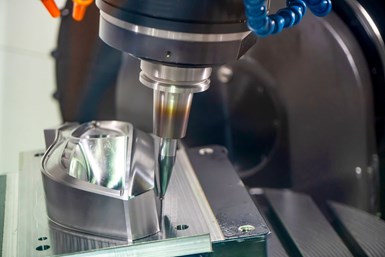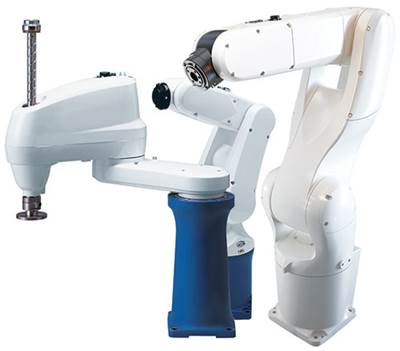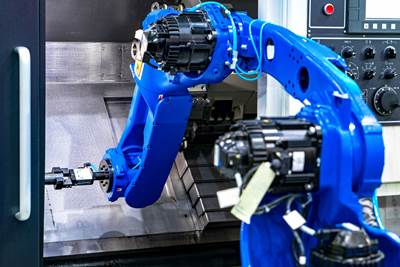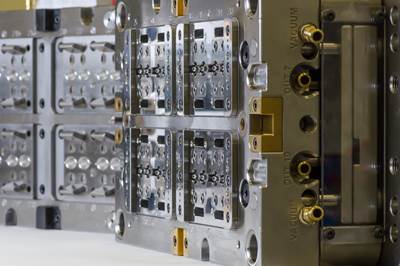A Few Words on Humans and Robots Working Together to Revitalize Manufacturing
It’s time to rethink what a manufacturing job is and what we can comfortably leave for robots.
After working with an automation advisory company on a recent article about how to start automating a moldmaking operation, they sent me this perspective piece from Søren Peters, CEO of HowToRobot.com and Gain & Co on the state of manufacturing and how robotics can move it forward with a little patience and understanding.

“Jobs and tasks change over time. The usual solutions within manufacturing no longer apply: Offering human laborers to work the same dirty, dull and dangerous tasks daily at a low salary isn't working. Offering higher pay helps but still doesn't solve the main problem. People aren't finding manufacturing jobs as attractive as they once did, and outsourcing production to lower-income countries is also off the table. Covid showed us how important it is to have a local production that is less dependent on global supplies.
The expectations of younger generations for what work can provide and its salary are changing too. Is work meaningful – or at least not wearing me down? Does it help me develop my skills? Is social life good? Recruiting will not be easier if you can't answer these questions as a manufacturer. It’s time to reconsider what a manufacturing job should be – and what jobs are better left to machines.
Robotics is still relatively young, especially outside of the heavy manufacturing industries. As with any sizeable technological advancement, change is difficult. Leaders struggle to understand how to deal with the technology and the people who need to operate it lack the skills to do so. Many fear the technology simply because they lack knowledge about it and otherwise promising projects derail. As a result, robots are gathering dust in shop floor corners or not living up to expectations, causing people to lose faith in the technology. This can be avoided.
The simple truth is that robotics is hard. When you haven't experienced failure and seen the real-life possibilities and limitations of the technology, how do you navigate the many pitfalls?
As a newcomer, where do you start? Where does automation make sense – and where is it bound to fail? A robot may look impressive at a trade show, but how do you know if it can deliver what you need daily, year after year? And what skills are needed to keep it running?
Any manufacturers deciding to do something about their situation will eventually face these questions. Their situation is similar to companies adopting IT in the late 90s and trying to figure out how to spend their money wisely on technology. Often, admitting to not knowing is the real obstacle to overcome. Many experts claim to have the answers, but only a few understand businesses' real needs and challenges. It all starts with acknowledging where you are and where you are going.
It is easy to hope that things will return to the way they were before. Waiting for the waters to pass may seem like the easiest option when the waters are stormy. Except, in this case, there are no apparent signs of the storm passing. The industry has an image problem. Getting more people back to work at manufacturing jobs will not happen unless perceptions change.”
Related Content
Hands-on Workshop Teaches Mold Maintenance Process
Intensive workshop teaches the process of mold maintenance to help put an end to the firefighting culture of many toolrooms.
Read MoreLaser Welding Versus Micro Welding
The latest battle in finely detailed restoration/repair of mold materials.
Read MoreForces and Calculations Are Key to Sizing Core Pull Hydraulic Cylinders
To select the correct cylinder, consider both set and pull stroke positions and then calculate forces.
Read MoreTreatment and Disposal of Used Metalworking Fluids
With greater emphasis on fluid longevity and fluid recycling, it is important to remember that water-based metalworking fluids are “consumable” and have a finite life.
Read MoreRead Next
10 Considerations for Choosing a Robot
Knowing what to look for is essential when comparing and evaluating robots from different manufacturers.
Read MoreHow to Start Automating Your Moldmaking Operation
A few fundamentals of moldmaking automation include identifying key areas and places to avoid and addressing common concerns and roadblocks.
Read MoreAutomation Opens Door to New Possibilities and Need for More People at Minnesota Mold Builder
Increasing automation throughout the shop with both palletization, EDM and five-axis machining has allowed Mold-Tech to grow in technology, throughput, and people.
Read More












.jpg;maxWidth=300;quality=90)





_300x250 1.png;maxWidth=300;quality=90)







